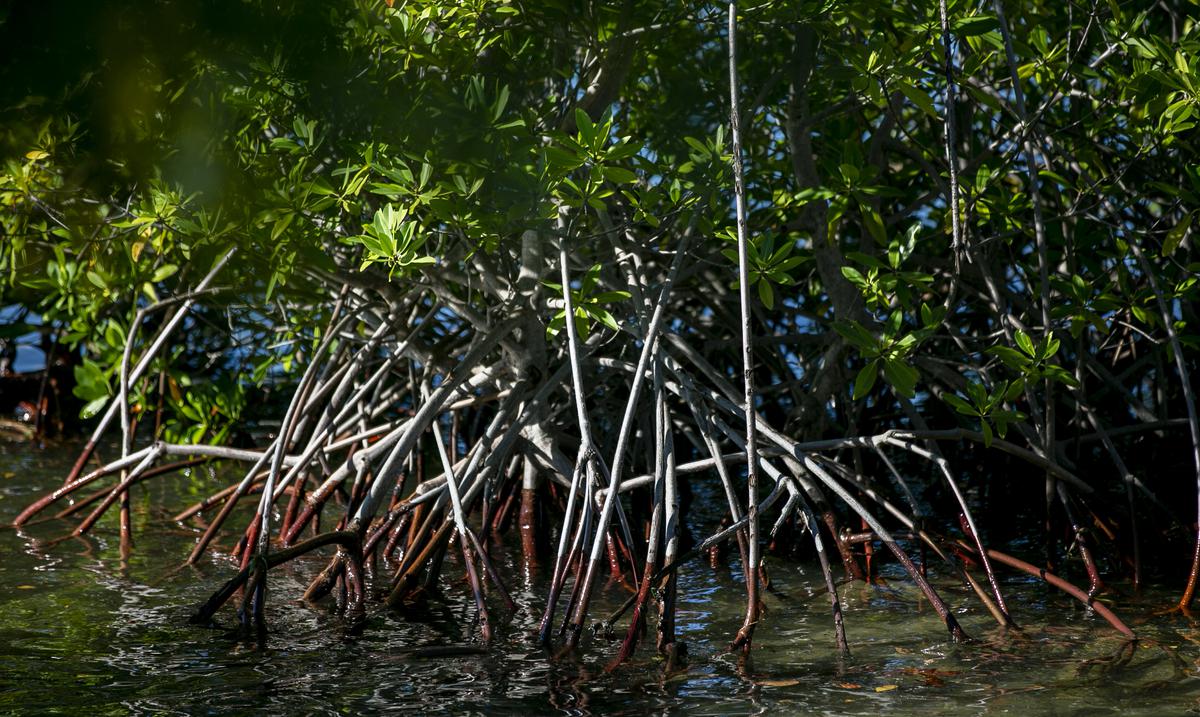Scientists of the University of Puerto Rico (UPR) in Ponce showed that the mangroves They help mitigate underwater noise, a finding that contributes to the reasons why the protection and reforestation of these coastal ecosystems should be promoted.
The discovery, which will be published in the Caribbean Journal Of Sciencealso contributes to the call to protect the fishsince it is proven that noise and sounds interfere with its playback.
In interview with The new day, Francisco Castro RiveraBiology student, explained that the purpose of the study was to measure the impact of anthropogenic sound caused by the Aguirre power plant, in the Jobos Bay National Estuarine Research Reservein Salinas. Using an underwater microphone, the researchers recorded the noise frequencies at nine points of different proximity to the thermoelectric plant.
“We obtained that the frequencies of (the Aguirre plant) were present at quite low frequencies in areas closer to Aguirre, even at points up to two kilometers from Aguirre. But, when we began to take points within the mangrove system of Bahía de Jobos, we realized that the Aguirre sound signal was considerably diminished and, in other points, it could not even be heard”Castro Rivera added.
The director of the Conservation Ecology Laboratory of the UPR in Ponce, Alejandro Ríos Franceschi, added that the mangrove system also reduced the noise decibels of the Aguirre plant. He compared that The mangrove reduces the energy of sound like that of waves.
“Storm surges affect the coasts. One of the main functions of mangroves is precisely that: they help us with storm surges, as well as soil degradation due to erosion. But this underwater noise mitigation function is a new function for mangrove systems.“said Ríos Franceschi.
He believed, meanwhile, that the findings should be taken into consideration during the construction processes to implement mitigation measures that protect both mangroves and fish from the repercussions of coastal project developments.
“Many of these commercially important fish reproduce acoustically underwater. At the frequency with which these fish communicate, it is the same frequency that Aguirre (the power station) emits, so it interrupts that communication process. Something important that should be indicated to all these coastal projects is that they reforest mangroves so that the noise they generate with their activities does not impact the natural marine life of that area.”said the professor.
In turn, Castro Rivera commented that it is evidenced – in past studies – that several species of fish, as well as marine mammals, depend directly on acoustics to communicate, orient themselves, reproduce, hunt their prey and carry out courtship.
“The impact of anthropogenic sound, in many of these places, has caused these fish to become confused, to lose orientation, to change their reproduction habits, to change those hunting habits, even to leave the area, for example, reducing the abundance and biodiversity of the area,” said the student.
“
Something important that should be indicated to all these coastal projects is that they reforest mangroves so that the noise they generate with their activities does not impact natural marine life. ”Alejandro Ríos Franceschi
While, Luis Colon Davilawho also studies Biology at the UPR in Ponce, highlighted that the research will have an impact on the communities due to its conservation aspect.
“Thanks to this study, we have a new reason to protect mangroves. Now, We have a new argument for why they have to be protected and why there have to be projects to reforest the mangrove areas that were cut down.“, stated Colón Dávila.
Next steps for the investigation
In the future, the director of the Laboratory mentioned that they need to collect a greater amount of data to strengthen the results of the study. He also noted that they want to incorporate other elements, such as the diversity of fish in the area and the parameters of the music.
In relation to the effects of music, “it has not been corroborated in Aguirre, but it was corroborated in Ponce,” said Ríos Franceschi. “We measured the music from speakers on the beaches more than 500 meters away from the shore and the full lyrics of the song could be heard more than 40 feet deep.”
Although they did not consider it for this stage, they clarified that they will examine the effect of the Aguirre hot water drain, considering that it is close to the study area.
Also, he highlighted that they need to measure the noise during the night because, for the moment, they only recorded the sounds in the morning.

